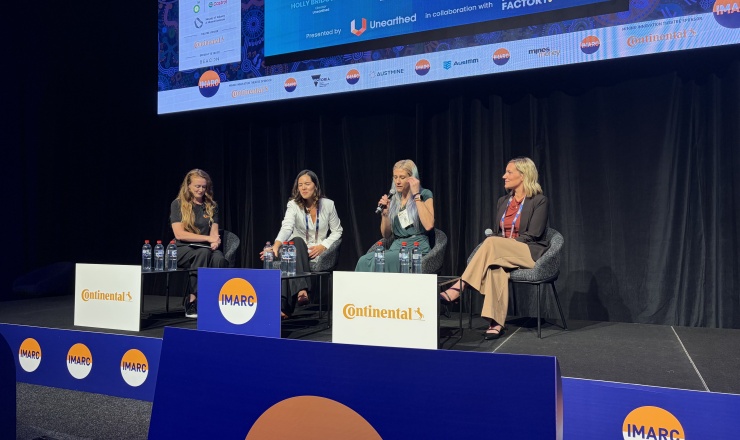
Funding the Future of Mining Tech at IMARC 2025
Hosted by Unearthed in collaboration with Founders Factory , our session “Funding the Future of Mining Tech” brought together a
Read articleUnearthed announced the winners of the Explorer Challenge on 28 June 2019, following three intensive months (and undoubtedly many cups of coffee) as teams competed for a share of a A$1 million prize pool to develop new ideas about mineral exploration.
In a bold move, mining company OZ Minerals handed over more than two terabytes of private data from their own exploration project, in addition to over three terabytes of public data, in order to crowdsource predictions on the next mineral deposit in South Australia. Teams consisting of geologists, geoscientists and data scientists stepped up to the challenge, finding new ways to overhaul and optimise the mineral exploration process.
Cyency came to the competition with a strong data science and geoscience background. Presented with the OZ Minerals data, they drew on their combined experience across these areas while keeping their minds open to new ways of approaching the data.
Hugh Sanderson has been practising deep learning for several years and spent many more years on machine learning “before it was cool”. Derek Carter has been involved with the technical and software side of mining for over a decade and is an expert at manipulating and processing geological data. The third member of the team, Chris Green, is an experienced geologist with an enduring interest in innovation.
Together, they weighed up the competition’s data and used their professional intuition and collective knowledge to develop ways of using it.
The Explorer Challenge was aptly named,” Hugh notes. “With so much data, it was difficult to know where to start, so we started with what we knew: the results from the Data Science Stream. We had a set of models that we knew were pretty good at predicting mineralisation across Australia, so we ran them over the tenement.”
They found that the models did a very good job of predicting drilling locations – “they were ‘thinking like a geologist’ so we had some confidence in them”.
We then used the Australian models as pre-training for new models that directly predicted drilling assays,” explains Hugh. “This allowed the algorithm to know what is generally important for predicting mineralisation information but apply it specifically to the target area. These models formed our prospectivity maps.”
After reading stories of the Prominent Hill discovery, the team was still concerned they might be missing out on ‘the big one’, so they added a second branch to their approach.
Every geologist we talked to was interested in anomalies in the magnetic and gravitational data,” says Hugh. “So, we wrote an ‘old-school’ image processing detector to find the non-magnetic parts of coincident magnetic and gravitational anomalies, which generated about 30 targets – three of which were Prominent Hill, Peculiar Knob and Cairn Hill, so we knew we were onto something.”
“We combined these two results in our final entry.”
Cyency’s team members are keen to develop a business in the mining/geology/artificial intelligence/machine learning space. They feel there is still plenty of scope to further the work they’ve begun. “For example, we simply did not have enough time to analyse the core photographs but think there could be valuable information in them,” Hugh says.
The competition has allowed the team to explore new dimensions and interesting problems in their professional fields – and being amongst the winners has validated their approach.
The technology has opened up a greenfield,” says Hugh, “and Australia looks well placed to take advantage of it.”
Hugh, Derek and Chris intend to continue working in the machine learning and geology fields, and they look forward to using their winnings to continue pursuing “several promising directions”.
We believe the models we have are generally applicable to exploration in Australia, so we will be looking for opportunities where we can add value. We saw how incorporating local drilling or sampling data can improve the results, so this is something we will also be investigating further.”